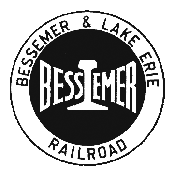 A Country in Crisis: the Panic of 1837
A Country in Crisis: the Panic of 1837
Any new economy is going to be slowly rising on shaky feet, and it should not be forgotten or underestimated that America was at this point less than sixty years old, counting from the time it became a nation independent of Great Britain. Several factors came together to plunge the country into a half-decade-long depression from which it struggled to recover. As is almost always the case, the crash was preceded by a time of booming economy, when slaves, land and cotton all commanded a high price, and business was good. Relying somewhat on loans extended from Britain, America was hit by a plague of Hessian fly, which decimated wheat crops and, as we’ve seen from the examination of the first Irish Famine in my History of Ireland journal, when the supply is reduced the demand is increased and as a result the price skyrockets, as it did, leaving many American families (presumably mostly poor ones) to starve.
Banks like to speculate. They always have done, and, despite the many many dire and terrible warnings served up to them from the Great Crash of 1929 to the Financial Collapse of 2008, they probably always will. After all, it’s easy to gamble when it’s not your own money you’re risking. And so in the 1830s British banks had speculated in risky ventures, some of which included the American transportation networks, and as a result, as is always the case eventually, their reserves began to be depleted. And as always happens when this is the case, they began to call in their loans. The demand for cotton dropped (I don’t know why) and as this was perhaps the largest export, America found itself in big trouble.

Certain banking decisions made by the federal government exacerbated the problem, and eventually triggered a real estate crash, leading to something of a perfect storm as the American economy began to approach the U-bend. New York banks lost over one hundred million dollars (back then; around the three billion mark today) between them, and almost a third of the banks in the USA went out of business. States defaulted on their bonds to British banks, and America was for a time forced to withdraw from the international money market. Naturally, the fall in cotton demand was felt most keenly in the south, where many plantation owners, having spent their profits in advance, were forced to sell up. What happened to their slaves is, sadly, anyone’s guess.
The crisis began to peter out around 1842, and with the discovery of gold in California and later silver in Nevada, the economy bounced back and America began to chart its own financial destiny, no longer reliant on other powerful countries such as Britain for loans. The Panic did however have the long-lasting and far-reaching effect of dinting people’s confidence in banks and financial institutions, a nervous relationship between the two which has persisted to this day, and with good reason. As alluded to above, it does not seem that banks learn from their mistakes; when they overreach, and are about to pitch forward into the abyss, the hand of government is always there to catch them, and even when that hand was withdrawn in 2008 and some huge American banks allowed to fail, the others who were bailed out did not take this as a warning, but licence to continue on as they had been, a temporary blip on their entitlement to lose people’s money and shrug, while pension funds and life savings vanished into an all-consuming chasm.
By the time the Panic of 1837 had faded to memory, American railroads were up and running, but even during that turbulent time, some managed not only to get built, but to expand, including the first ever proper rail network.
 Leading the way: The Erie Railroad
Leading the way: The Erie Railroad
Proposed as an alternative to, and mirroring the route of, the Erie Canal, the railroad was of course opposed by the operators of that canal, quite aware they were going to lose business if it was built. But protests by locals, many of whom had no access to the canals and therefore no transportation, quieted them and the building went ahead. In 1832 the governor of New York granted the railroad the charter to lay track from the Hudson River at Piermont (north of the Big Apple) westward to Lake Erie at Dunkirk. Construction began in 1836 and in 1841 permission was granted for the railroad to cross over into Pennsylvania on the west side of the Delaware. At 450 miles in length, it was easily the largest railroad in America at the time. However, to paraphrase the Bard slightly, the course of the American railroad ne’er ran smooth, and the New York & Erie Railroad, as it was originally called, suffered many setbacks during its construction, and actually went bankrupt not once, but five times!
As in all such projects, while many may welcome the new pathway to other cities, there were those who, while not necessarily opposed to it, saw a chance to cash in on the great American dream and do what humans have been doing from time immemorial: make a fast buck. Land had to be bought from farmers and plainsmen, frontiersmen and hillbillies, and they all demanded as high a price as they could get. Even some Native Americans - with whom we will deal extensively later, as their role in this shining new venture has, like that of the slaves in the south, been mostly airbrushed from the history of the American railroad - were canny enough to make money out of it. A Seneca chief, demanding ten thousand dollars for the right of way through his ancestral lands, answered the bluster of the foreman, who claimed the land was good for nothing else and was not worth such a price, that whatever else it was not good for, it apparently was good for the railroad. Hard to argue with that kind of logic.
A more religious or superstitious person might have claimed God did not want this railroad built. After advancing a loan of three million dollars, the city of New York was beset by a terrible and tragic fire that razed the financial district to the ground, and bankrupted investors. As I say, the first time the railroad went bust, but by no means the last. When it rose again there was a new president in charge, and he took advantage of the labour of immigrant Irish workers, who had come to America on the infamous “coffin ships”, fleeing the Great Famine and hoping to find a new life. Though wages were absurdly low, they were better than nothing, and if there’s one thing an Irishman does well, it’s backbreaking hard labour. As a result, Irish workers became part of the very structure of the railroad building, and would remain so as it developed across the nation into a coast-to-coast network.

Of course, one other thing an Irishman does almost better than anyone else is pick fights, and if there’s no foreigner to fight with, why then fellow Irishmen will do. Labourers from Ireland were divided into two camps, those who hailed for Cork and Munster, the south and southeast of the country, called the Corkonians, and those who came from Connaught, Galway and such places, who for some reason called themselves the Fardowners. When the Corkonians agreed to work on the railroad for twenty-five cents less than the going rate, the enraged Fardowners attacked their camp - mostly a big barn - toppled it and made every Corkonian swear not to work on the railroad. Then, still spoiling for a fight, they made for a group of German workers, but they, though outnumbered, gave the Irishmen a bloody nose, and the militia had to be called into re-establish order. Talk about Gangs of New York!
Irish or German though, Corkonian or Fardowner, the railroad worker’s natural enemy did not discriminate or take sides. The cruel icy snow that blanketed the tracks up to five feet in depth was hated by all, and in some begrudging form of co-operation the two crews would work together to clear the lines and allow further construction. This would become an increasingly difficult job in the years ahead, as the railroad network moved up into the Sierra Nevada mountain ranges, where the snowfalls would not be just irritating and inconvenient deposits to be cleared away by the sweat of one’s brow, but deadly, constant and life-threatening blizzards that could destroy track and wipe out whole camps of labourers at a stroke.
Errors plagued the building of the Erie Railroad, which, given it was one of the first - if not the first - is perhaps understandable, but some of the decisions are hard to fathom, such as the refusal to take the opportunity to buy the Harlem & New York Railroad, necessitating a steamer ride downriver for the passengers, the decision deliberate, as it was envisioned that the people might enjoy a trip on the river! Also the gauge chosen for the track, in the mistaken belief it was the same as the one used in Britain, and the usage of piling to support the tracks, an endeavour abandoned after an outlay of a quarter of a million dollars showed it was useless.
Whether all states did this, or whether the southern states took their cue from that of New York, or whether, indeed, it was mere coincidence I don’t know, but the Erie Railroad was expressly prohibited from crossing state lines so as to protect New York’s jealously-guarded status as a trading port. This decision would later be seen to be wrong, and would have to be reversed, at massive expense for the state. The failure - not only on the part of the Erie, but all American railroads - to settle on a universal gauge standard meant that connections between different railroads were at first impossible, as the gauge (distance between the tracks) of one would be different to another, and the trains from the one could not roll on the tracks of the other, making each railroad isolated to its own route.
The odd thing is, most people wanted this, even the normal folks. Riding on a train to get somewhere was all very well, but nobody wanted to invite those from other cities into theirs, in communities that had been, until the advent of the railroad, largely isolated and from which people seldom if ever tended to travel, with a kind of innate distrust of “the world outside”. Not to mention farmers and other traders, who, while they enjoyed using the convenience of the train to get their product to market faster, realised rather belatedly that this was a two-way street (or, to be more annoyingly accurate, a two-way rail) and that now people from outside of town could bring their produce to the markets these people served, up until now, as sole supplier. This mighty new sword, poised to cut through the previously inaccessible American countryside and open up new vistas and opportunities, was proving indeed to be double-edged, and sharp.